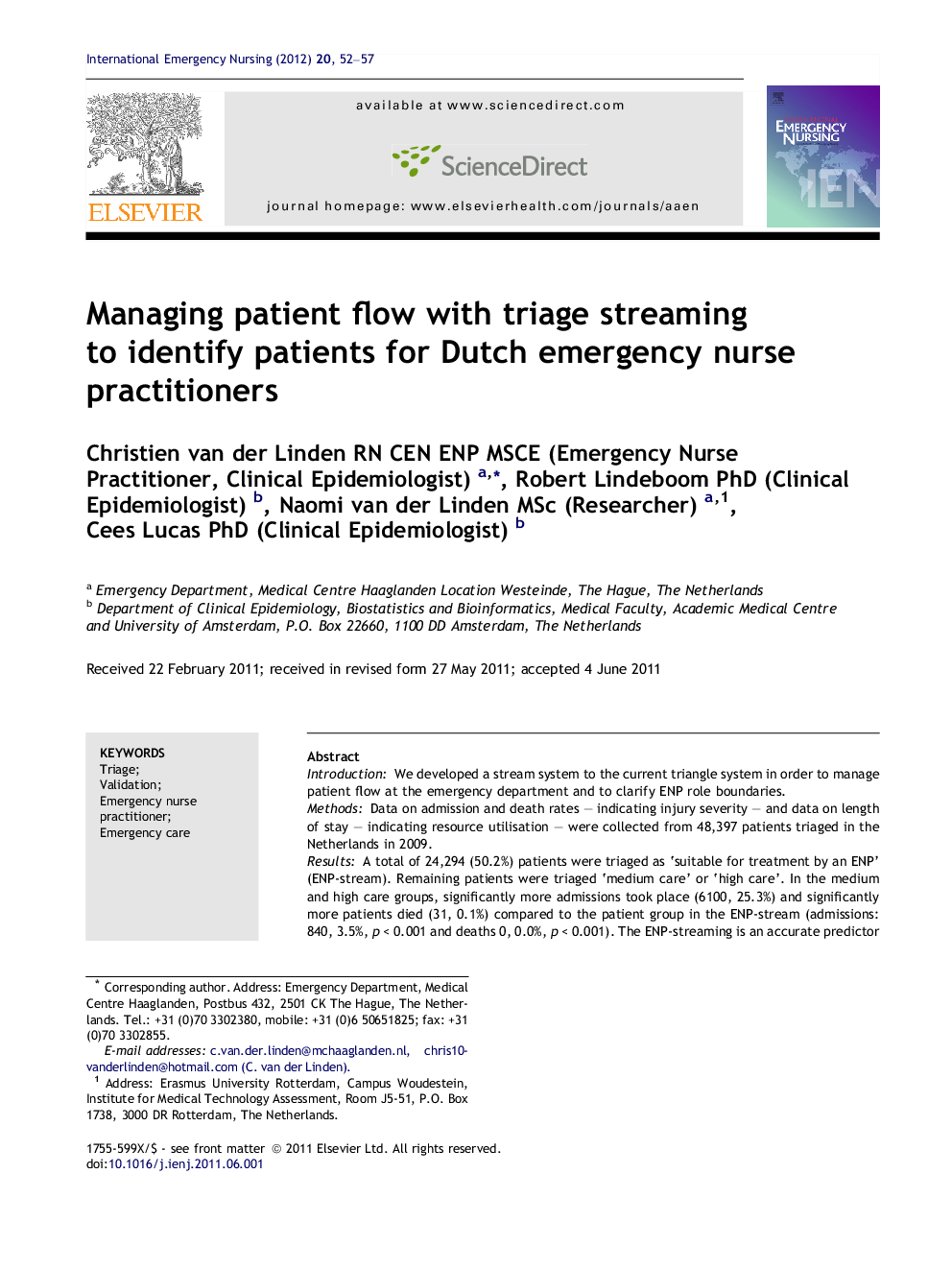| Article ID | Journal | Published Year | Pages | File Type |
|---|---|---|---|---|
| 2609216 | International Emergency Nursing | 2012 | 6 Pages |
IntroductionWe developed a stream system to the current triangle system in order to manage patient flow at the emergency department and to clarify ENP role boundaries.MethodsData on admission and death rates – indicating injury severity – and data on length of stay – indicating resource utilisation – were collected from 48,397 patients triaged in the Netherlands in 2009.ResultsA total of 24,294 (50.2%) patients were triaged as ‘suitable for treatment by an ENP’ (ENP-stream). Remaining patients were triaged ‘medium care’ or ‘high care’. In the medium and high care groups, significantly more admissions took place (6100, 25.3%) and significantly more patients died (31, 0.1%) compared to the patient group in the ENP-stream (admissions: 840, 3.5%, p < 0.001 and deaths 0, 0.0%, p < 0.001). The ENP-streaming is an accurate predictor of not needing to be admitted (PPV = 97%) and of ED survival (PPV = 100%). Mean length of stay was significantly shorter for patients in the ENP-stream compared to the other patients (back transformed values: 74 vs. 147 min, p < 0.001).ConclusionThis study showed excellent correlation between the ENP-streaming and patients’ injury severity and resource utilisation, suggesting high internal validity of our triage streaming system. It clarifies the ENP role, minimising the subjectivity of patient allocation.
